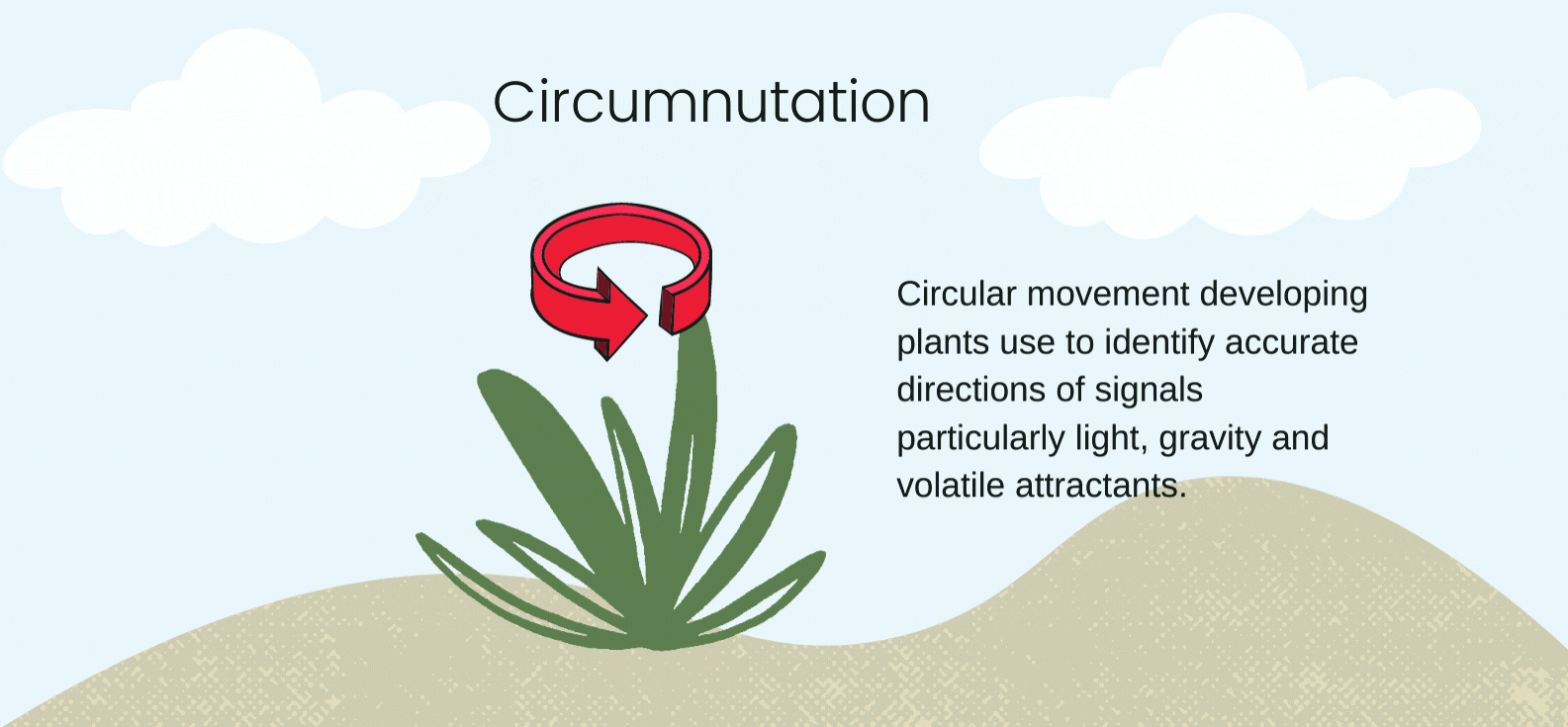If a tree falls in the woods, does it know it fell?
The answer is yes. In a sense, plants are able to think by perceiving their environment and making decided changes in order to thrive.
But when it comes to whether plants can think, plant thought is not at the level of sentience, or self-awareness, like it is for humans and animals.
Plants are masters of survival. Think about it, how do you survive when you can’t move? And yet, plants are so equipped, they can regenerate when more than 90 percent of their bodies have been eaten away. And plants have long-distance sex using their 20 senses – yes 20!
However, we tend to really take plant survival for granted. They’re just part of the scenery. They can’t move. Therefore, why would we ever consider them an autonomous organism?
We have never been more mistaken. This article explores some notions of plant intelligence, whether a brain is needed to express intelligent behavior, some phenomena associated with plant intelligence, and some unsolved mysteries that keep the plant intelligence discussion alive.
What is plant intelligence?
To really understand the depth of plant intelligence, it’s vital we grasp the concept. Several plant biologists apply Stenhouse´s definition of intelligence to plants.
Stenhouse simply defines intelligence as “adaptively variable behavior within the lifetime of the individual” (Stenhouse, 1974).
Another definition some researchers use is “the ability to solve problems.” Furthermore, “the behavior that profits from experience, through forms of learning and memory, and improves survival and thus potentially fitness is considered intelligent” (Trewavas, 2017).
Based on those previous definitions, plant biologists found their arguments supporting plant intelligence.
For example, Stefano Mancuso, director of the International Laboratory of Plant Neurobiology in Florence, Italy, mentions “plants are amazingly good at solving their problems.”
Undoubtedly, plants adapt their behavior to changing environmental conditions.
Like all organisms, plants must acquire the resources they need to grow. They also need to deal with predators and disease and also use animals or wind to find mates.
Thus, plant intelligence is defined as an “intelligence that goes beyond adaptation and reaction, and into the realm of active memory and decision-making” (Delistraty, 2019).

Is a brain necessary for intelligence?
A common assumption is that intelligence is associated with beings holding a nervous system, brain, and neurons. However, some plant biologists defend the idea that a brain is not necessary to express an intelligent behavior.
The argument relies on the fact that brains were the vehicle for the evolution of fast movement, favoring the quick context assessment by animals.
Nevertheless, either for animals or plants, the assessment of circumstances is a crucial quality of survival.
As a consequence of the relationship between the brain and intelligence, intelligent behavior is expected to involve movement within our understanding. In this sense, “plants seem to do nothing.”
However, the apparent “lack of movement” in plants is being reevaluated.
For instance, BBC studios launched a video showing the Plant Growth of Brambles. This video highlights two important things. The first part of the time-lapse, shows a shoot tip doing a “head shaking movement,” suggesting plants use environmental signals to help them “decide” which growth direction to take.
Second, once the plant “decides” which direction to follow, the shoot grows in a specific direction and moves swiftly without further shaking, except for minor adjustments later.
The “head-shaking movement” is called circumnutation – a circular movement plants use to identify accurate directions of signals, particularly light, gravity, or in certain cases, volatile attractants from parasitic plants.

We could say circumnutation allows a plant to build a picture of the environment.
So, in a sense, circumnutation is a type of “compass” through which a plant can “see and touch” its surrounding environment, and the process helps a plant decide where to go.
Later in this article, you will see that the function of a brain as an “information processor” is still present in the plants but expressed by a different mechanism called “swarm intelligence.”

Can plants learn and memorize?
Surprisingly, plants are showing evidence of having memorized responses to their environments. Researchers have observed plant decisions based on past experience when presented with similar environmental conditions.
Learning and memory are two well-known characteristics associated with intelligent behavior.
According to Cvrčková et al., 2009, acquiring a unique and novel experience, and using this experience for an organism’s own benefit, is considered learning.
And, memory is defined as the ability to recover information about past events or knowledge.
To better clarify, it might help to draw a comparison between animals and plants.
A simple animal like a nematode collects information from its surrounding environment like chemical signals, for instance, using sensory cells connected to sensory neurons. Then, it makes an assessment using its primary brain. This assessment leads to motor neurons exciting different muscles according to the nematode’s needs.
Here, the nematode’s behavior changes due to a learning experience. This experience is forested by adaptation, habituation and decision capabilities related to a favorable response such as food search. The behavior chosen is based on a choice between two contrasting signals (high and low-cost energy inversion).
Then, suppose the nematode is faced with similar conditions a second time. In that case, it will use its “memory” of past events to appropriately overcome the current situation and favor its fitness, that is, the ability of an individual to perform in its environment.
In a plant, cells commonly perceive information from outside through specific receptors of activation and amplification. With this process, a signal in an extremity of the plant must be communicated to the whole plant body. Such communication executes a chain reaction, involving secretion, ion flux changes, and gene expression in responding cells.
Therefore, when comparing plants to the nematode, researchers found plants also make decisions favoring their fitness. When a plant is exposed to similar stress conditions for the second time, plants respond faster to overcome the problem.
This “faster” response is evidenced by amplified signals. An amplified signal means, for instance, the concentration of a specific protein belonging to the metabolic pathway involved in the stress condition will be increased.
Then, cell behavior is modified by adaptation, habituation, and decision capabilities through feedback and feedforward processes.
The feedback is the process where there is a response of a receiver to the sender’s message (input signal). The feedforward refers to providing future-oriented options or solutions.

Signs of intelligent behavior in plants
Plants and animals face similar problems. Both need to find energy, reproduce and stave off predators, though they differ significantly in their approaches.
If the approaches are different, then what phenomena in plants are associated with intelligent behavior?
1. Energy needs
To solve their energy needs, most plants seek sunlight. Although plants can grow in shady areas, most of their lifespan is devoted to locating light.
So plants use strategies like turning their leaves during the day to capture the best light. In other cases, like forest canopies, leaves tend to form monolayers, maximizing light gain for expenditure on leaf construction.
Under low light conditions, most of the carbon sources are committed to height and sufficient root stabilization. All of these events require plants to “decide” where to go.
2. Reproduction
Some plants use animals to facilitate reproduction. Here, many plants use complex tricks or provide “snacks” and advertisements such as colors to attract pollinators.
Some plants even distinguish between different pollinators and only germinate their pollen for the best.
Again, all these responses require plants to take quick actions through metabolic changes as well as by searching for proper environmental conditions to promote reproduction.
3. Defense
Plants have evolved an incredible variety of toxic compounds to stand up to predators.
When attacked by a pest, like an insect, many plants release specific chemical compounds. But they don’t just throw out compounds, they often release the chemical only in the leaf that is attacked.
4. Communication
Plants are complex communicators, and they communicate in a wide variety of ways. One of the most well-studied mechanisms is chemical volatiles, where some plants smell good and others awful.
Plants communicate odor to other plants but mainly for pollinators.
However, scientists have also discovered plants communicate using electrical signals and even vibrations.
One of the best communication strategies is when a pest attacks a plant. The plant releases volatile chemicals to warn neighboring plants about it.
The signal turns on the plant immune system not only for the attacked plant but also for their neighbors.
Furthermore, plants are able to recognize their closest genetic kin and will react differently to plants of the same parents than they would from plants of a different parent.
For instance, the same plant species can produce stronger phenolics compared to others producing less effective secondary metabolites.
Swarm Intelligence
In the absence of a central nervous system to channel information from the external environment, plants use a decentralized system to collect information from the surrounding environment, and each plant cell works as a point of information gathering.
Plant biologists have associated this adaptive performance of plants with a colony of bees.
A colony of bees is composed of many individuals who are largely homogeneous and interact with each other to form complex dynamic networks.

Unsolved mysteries
Much of the research regarding plant intelligence has been concentrated on identifying signals, and the positive feedback that initiate genetic changes.
However, to have a better understanding and get better evidence that strengthens the concept of plant intelligence, it is necessary to dig into the negative feedback interactions, which are less known.
Similarly, it is not well understood how plants sense the soil space availability (how big or small the area is). Furthermore, what is communicated by plants remains unknown.
References
Cvrčková, F., Lipavská, H., Žárský, V. 2009. Plant Intelligence. Why, why not or where?. Plant Signaling & Behavior 4:5, 394-399.
Delistraty, C. 2019. The Intelligence of Plants. The Paris Review. Accessed on 07 of September 2021. URL: https://www.theparisreview.org/blog/2019/09/26/the-intelligence-of-plants/
Hance, J. 2015. Are plants intelligent? New book says yes. The Guardian. Accessed on 07 of September 2021. URL: https://www.theguardian.com/environment/radical-conservation/2015/aug/04/plants-intelligent-sentient-book-brilliant-green-internet.
Morris, A. 2018. A Mind Without A Brain: The Science Of Plant Intelligence Takes Root. Accessed on 07 of September 2021. URL: https://www.forbes.com/sites/andreamorris/2018/05/09/a-mind-without-a-brain-the-science-of-plant-intelligence-takes-root/?sh=3296961876dc.
Pollan, M. 2013. The Intelligent Plant. The NewYorker. Accessed on 08 of September 2021. URL: https://www.newyorker.com/magazine/2013/12/23/the-intelligent-plant.
Science Friday. 2014. New research on plant intelligence may forever change how you think about plants. Accessed on 08 of September 2021. URL: https://www.pri.org/stories/2014-01-09/new-research-plant-intelligence-may-forever-change-how-you-think-about-plants.
Stenhouse D. 1974. The evolution of intelligence—a general theory and some of its implications. London: George Allen and Unwin; 1-376.
Trewavas A. 2017 The foundations of plant intelligence. Interface Focus 7: 20160098. http://dx.doi.org/10.1098/rsfs.2016.0098.
